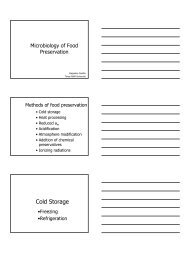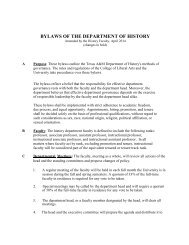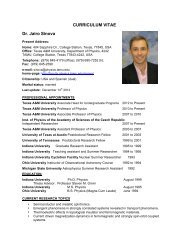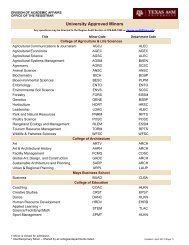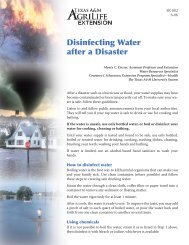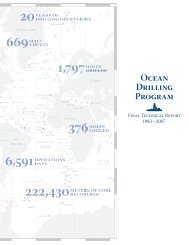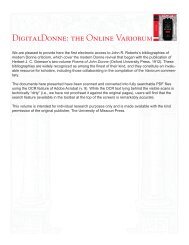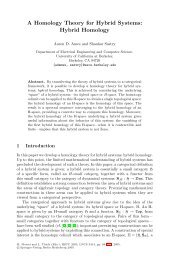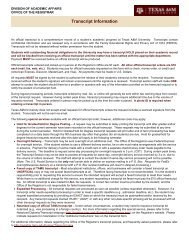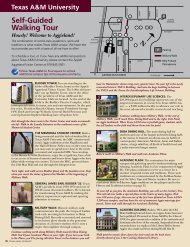Hypoxia - Gulf of Mexico Coastal Ocean Observing System
Hypoxia - Gulf of Mexico Coastal Ocean Observing System
Hypoxia - Gulf of Mexico Coastal Ocean Observing System
You also want an ePaper? Increase the reach of your titles
YUMPU automatically turns print PDFs into web optimized ePapers that Google loves.
ated into a 2008 <strong>Gulf</strong> <strong>Hypoxia</strong> action plan (Mississippi<br />
River/<strong>Gulf</strong> <strong>of</strong> <strong>Mexico</strong> Watershed Nutrient Task<br />
Force 2008), which retains the coastal goal <strong>of</strong> reducing<br />
the hypoxic zone areal extent to 5,000 km 2 by 2015,<br />
but calls for nutrient loading reduction targets <strong>of</strong> 45%<br />
for both nitrogen and phosphorus, based on revised<br />
model predictions. To learn more go to http://water.<br />
epa.gov/type/watersheds/named/msbasin/msbasin_index.cfm.<br />
Additionally, the <strong>Gulf</strong> <strong>of</strong> <strong>Mexico</strong> Alliance (GOMA), a<br />
partnership <strong>of</strong> the states <strong>of</strong> Alabama, Florida, Louisiana,<br />
Mississippi, and Texas, has identified six priority<br />
issues that are regionally significant and can be effectively<br />
addressed through increased collaboration.<br />
One <strong>of</strong> the six priority issues is nutrients and nutrient<br />
impacts. A team <strong>of</strong> state, federal, and academic<br />
pr<strong>of</strong>essionals makes up the GOMA Nutrient Priority<br />
Issue Team. This team is currently implementing nutrient-reduction<br />
initiatives throughout the <strong>Gulf</strong>. To<br />
learn more go to http://www.gulf<strong>of</strong>mexicoalliance.<br />
org. These are two <strong>of</strong> the numerous efforts underway<br />
to reduce the hypoxic zone in the <strong>Gulf</strong> <strong>of</strong> <strong>Mexico</strong>.<br />
How<br />
can you<br />
help?<br />
As citizens, we each can contribute to reducing<br />
the size <strong>of</strong> the hypoxic zone through our individual<br />
actions. Here are a few suggestions:<br />
• Fertilizer run-<strong>of</strong>f from our yards, fields, and<br />
lands contribute to the nutrient loading. You<br />
can help reduce this by becoming educated<br />
on proper fertilization practices or by minimizing<br />
your use <strong>of</strong> fertilizers overall.<br />
• Preserve land adjoining rivers and streams.<br />
This land helps prevent nutrient run<strong>of</strong>f<br />
(Bledzki 2009).<br />
• Support the protection and restoration <strong>of</strong><br />
natural wetlands and construction <strong>of</strong> artificial<br />
wetlands that can help reduce nutrients<br />
before they enter streams.<br />
• Support best waste-water management and<br />
treatment practices in your community.<br />
Photo credit: NOAA<br />
7



